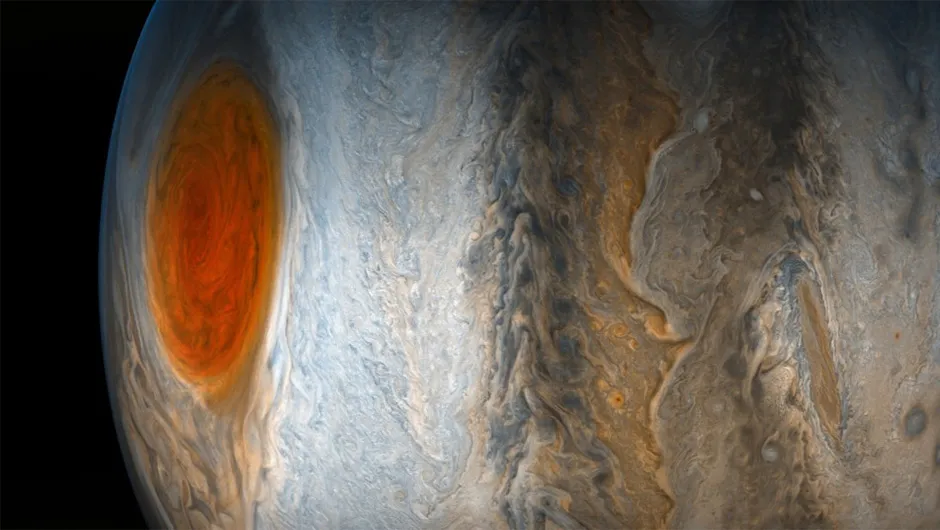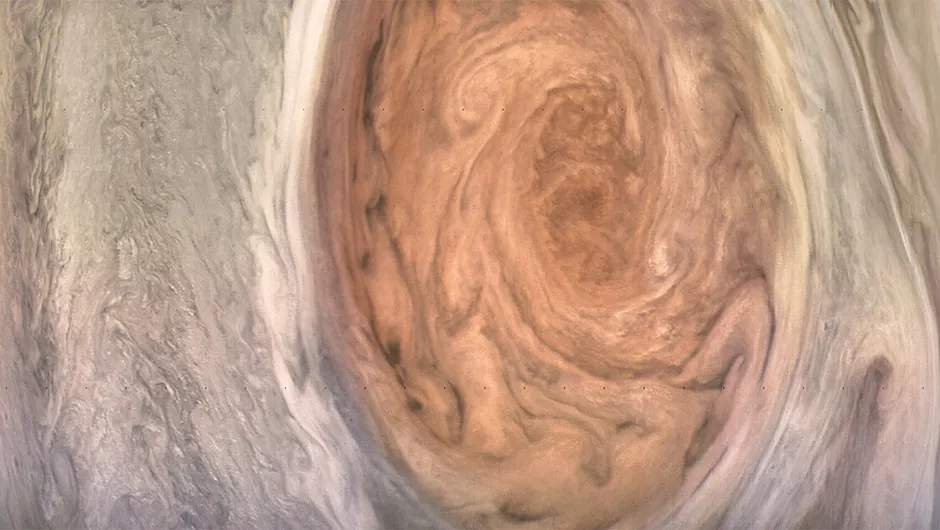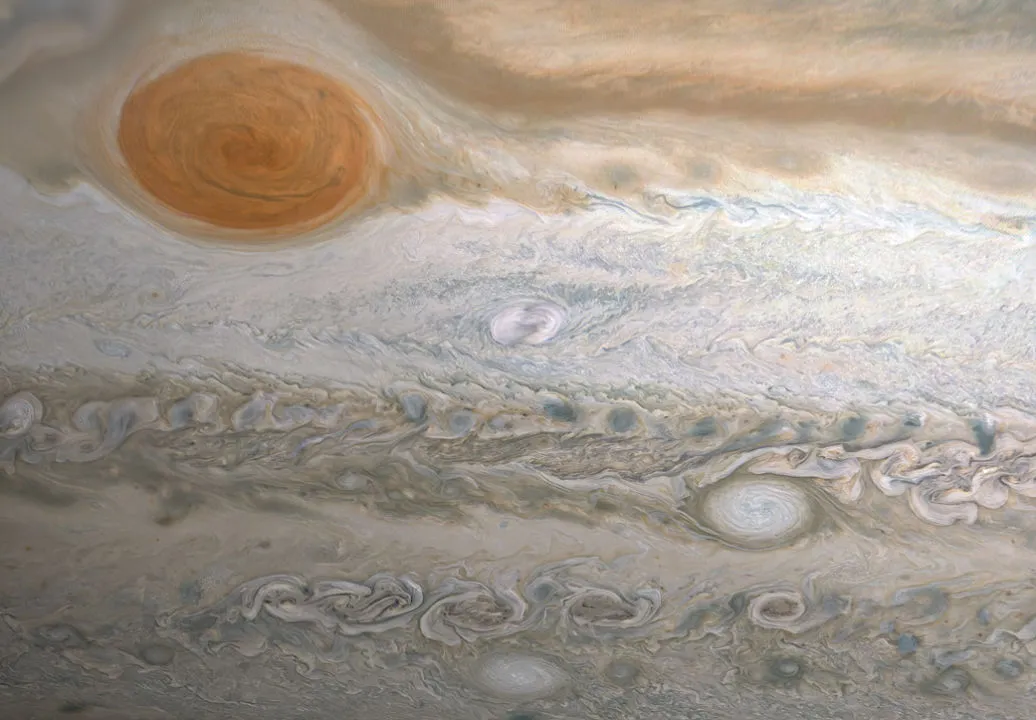Twisting, swirling clouds wind through Jupiter’s Great Red Spot in images captured by NASA's Juno spacecraft at Jupiter during its fly-bys over the planet’s huge storm.
Juno has captured the most detailed images of Jupiter’s most famous feature that scientists have ever seen.

"For hundreds of years scientists have been observing, wondering and theorising about Jupiter's Great Red Spot," says Scott Bolton, the Juno mission's principal investigator.
"Now we have the best pictures ever of this iconic storm.
"It will take us some time to analyse all the data from not only JunoCam, but Juno's eight science instruments, to shed some new light on the past, present and future of the Great Red Spot."

16,350 km wide, the Great Red Spot is a huge storm that is about 1.3 times as wide as Earth.
It has been monitored since 1830 and may have been raging for over 350 years.
NASA's Juno spacecraft has been orbiting Jupiter since 2016, passing from pole to pole and giving planetary scientists amazing views of Jupiter like never before.
It has captured images of Jupiter's Galilean moons, its polar regions and its amazing stormy atmosphere.
During one flyover, Juno passed about 9,000 km above the Great Red Spot's cloud tops.

"These highly-anticipated images of Jupiter's Great Red Spot are the 'perfect storm' of art and science.
"With data from Voyager, Galileo, New Horizons, Hubble and now Juno, we have a better understanding of the composition and evolution of Jupiter's Great Red Spot," said Jim Green, then NASA's director of planetary science.
"We are pleased to share the beauty and excitement of space science with everyone."


